#AWD Starion
Text
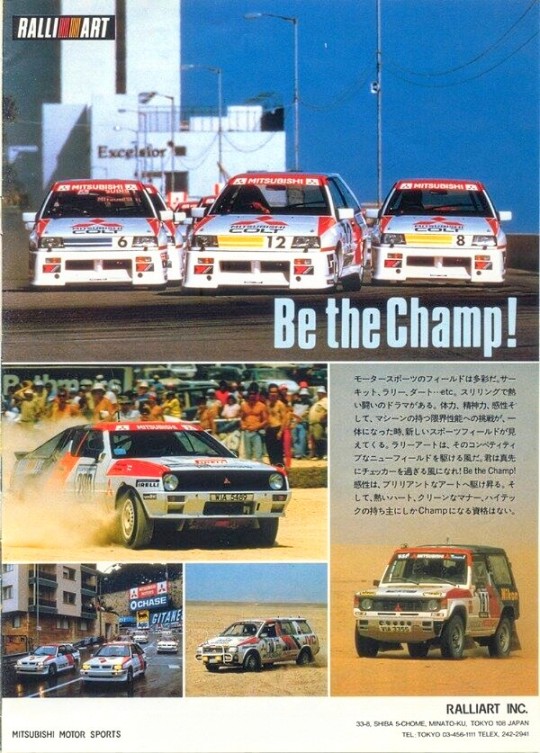
RALLIART
Be the Champ!
The fields of motor sports are diverse. Circuit, rally, dirt, etc. There is a drama of thrilling and hot battles. When physical strength, mental power, sensibility, and the challenge to the limit performance of the machine come together, a new sports field will appear. Ralliart runs its competition in many fields. Be the wind that passes the checkers! Be the Champ! And only those with a hot heart, clean manners, and high tech are eligible to become champions.
MITSUBISHI MOTOR SPORTS
RALLIART INC. 33-5 SHBA SCHOME, MINATO KU, TOKYO 108 JAPAN TEL: TOKYO 03-456-mm TELEX, 242-2041
#Ralliart#Ralliart Pajero#Paris Dakar Pajero#Paris Dakar#AWD Starion#Mitsubishi#Mitsubishi Starion#Mitsubishi Pajero#Mitsubishi Colt#Ralliart Colt#Mitsubishi Nimbus#Ralliart Nimbus#Mitsubishi Chariot#Ralliart Chariot
19 notes
·
View notes
Text
Annual “what id build for sema” post.
I would build a period correct, Group B spec KP60 starlet with the strengthened AWD system out of a hilux and a 4TGTE turbo motor from the celica Group B car.
The awd system wouldn’t be great, but it would fall within the group b regulations and be period correct like the starion group b awd project. I would try to fit the front diff as a part of the front sump to avoid having to raise the engine, but keep it as a simple plate type lsd, maybe like an F series and the rear is a G series lsd
N2 flares with cutout at the bottom for ground clearance, big wing on the back. Tube frames where needed for strength. Rear mounted radiators with intercooler up front.
Make it something Toyota could have built with the resources and technology they had in 1982-84.
2 notes
·
View notes
Text
The greatest of all time!
And no, you can not prove us wrong, it just is not possible!
Group B rally was the greatest racing of all time. The cars was crazy fast, built to the limit (sometimes beyond), the action was never ending, the drivers were like gladiators.
The class launched in 1982 with virtually no limits on performance, it was a class for manufactures to show what their engineering teams were capable of. Engines ranged from 1400cc up to almost 5000cc, many cars were turbo or supercharged. The drive train configurations varied greatly as well. AWD, FWD, RWD, front engine, mid engine and rear engine cars were all on the grid. And really becuase everyone spared no budget, they were all very competitive. Of course you know the staples; the Ford RS200, the MG Metro 6R4 and like but there were others that were not as popular or never made it to a race because almost as quick as Group B started it was ended due to a number of horrible accidents.
Lets take a look at some of the rarer cars.

The Mitsubishi Starion.

The Giocattolo

The Lancia ECVII

Mazda RX7 EVO

The Mazda Familia Sport 4
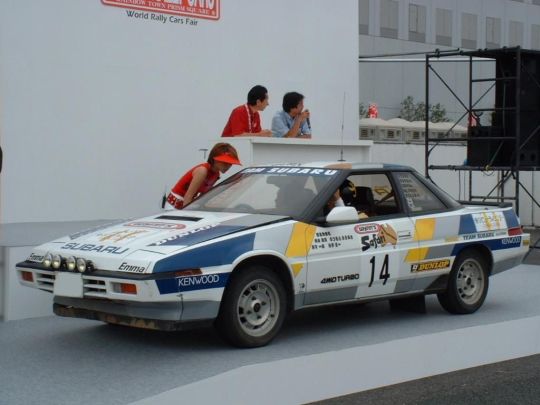
The Subaru XT

The Polonez 2000
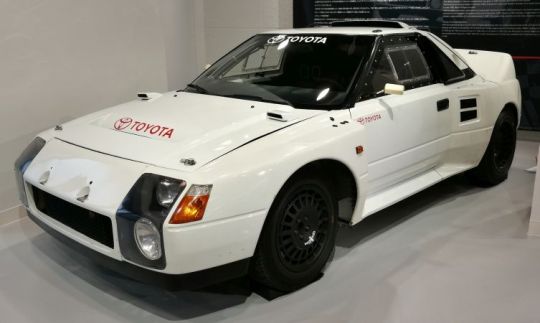
The Toyota 222D

The Talbot Horizon
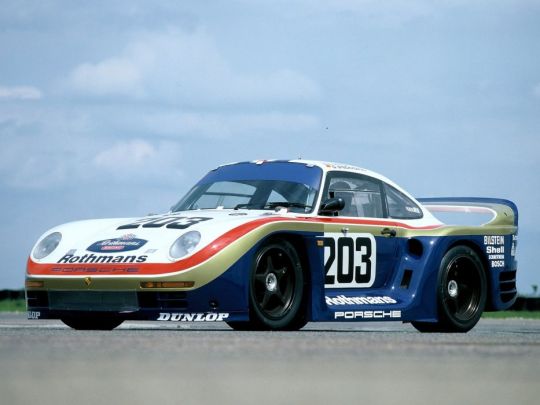
Porsche 959
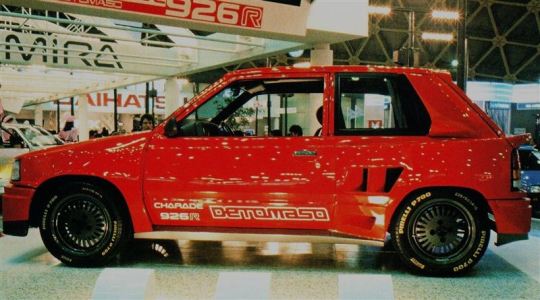
The Diahatsu Charade DeTomaso 926R

The Citroen Lisa Lotus
10 notes
·
View notes
Photo
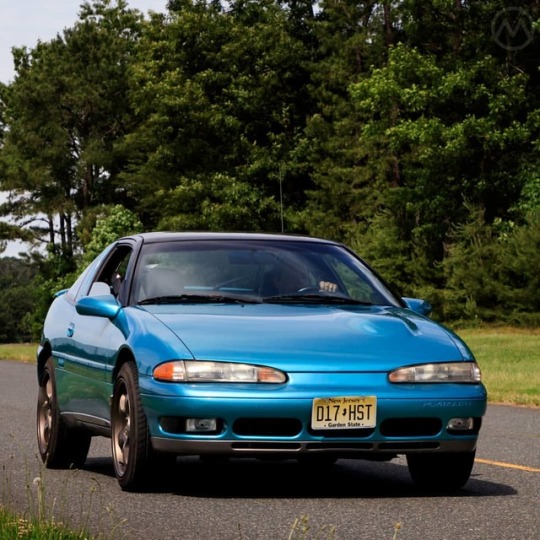
Over time, #DSM (named for the “Diamond-Star Motors” factory and partnership) came to mean only one vehicle - the Mitsubishi Eclipse, but in the beginning the DSMs were a trio of worthy, inexpensive performance cars. Partners since 1971, Chrysler and Mitsubishi created the “Diamond-Star” JV in 1985 and its first fruits were the original Eclipse and what’s now the most obscure DSM - the #Plymouth Laser. The third DSM, the Eagle Talon, bowed a few months later. - Originally, the point of Diamond-Star was to skirt “voluntary” import quotas that limited Japanese imports to the U.S., set by the Reagan administration in 1981. The quotas made Japanese cars more expensive for consumers and more profitable for their makers, but certainly not less popular. Chrysler was importing lots of Mitsus at the time and Mitsubishi launched its own U.S. operation in 1983. As at Nissan, and Honda, a U.S. factory would provide quota-less cars - ground was broken in early 1986 and the first cars rolled off the line in the fall of 1988. - The success of the Starion, Dodge Daytona, and fwd Dodge Charger/Plymouth TC3 set the stage for new performance cars, but in those days #Plymouth was hurting for models of its own - all Plymouths had been rebadged Dodges since 1981. The new sports coupes destined for DSM were front-drive, nimble, aerodynamic machines that looked futuristic and, with the optional DOHC #4G63 engine, were pretty quick - and very fast with the turbocharged 4G63T. - With the Turbo, the Laser was the fastest Plymouth since the glory days of Mopar Muscle. It debuted with great fanfare in January, 1989 - with a marketing campaign featuring Tina Turner. But the Laser was an odd fit at value-minded Plymouth.They sold reliably - about 28,000 a year for the first couple of years, but never got as much attention as the other versions, though it belatedly got AWD and a minor restyle in 1992. By then the original partnership was over. Chrysler’s 1980s recovery gave way to new financial woes in 1991 and it sold a controlling interest in DSM to Mitsubishi. The quota system ended in 1994, and when it came time to refresh the DSMs into a 2nd generation, the #Laser was quietly dropped https://www.instagram.com/p/B3Cf49UFMEv/?igshid=7mdm6dvhtrgn
0 notes
Text
DSM Goodness Inside: The Better Side Of Mitsubishis On Display At The DSM Shootout
Mitsubishi is a strange focal point of mine. I used to crack all of the crank walk jokes and “Danger to Manifold” lines I could. But at the same time, I have some very, very fond memories of canyon racing a 3000GT VR4 in the foothills of the Rockies in Colorado. I might still gag a little seeing a fully neon, winged Eclipse, but if I located a real-deal AWD example that wasn’t beat to hell or rotted, I couldn’t say for sure that I wouldn’t be intrigued. And I don’t care how badly anyone bashes on the Mitsubishi GTO platform, I’d rock a 3000GT or Stealth all day long, I think they are badass. And that’s before we touch on the 4G63 mill, a four-cylinder that punches far above it’s initial weight class, any Starion-based machine, or any of the Mitsubishi P’up-based trucks. Small wonder, then, why I go after the current state of the company with venom flowing…they had it so right and let it go so wrong!
This is footage from the DSM Shootout, courtesy of 1320Video, and Kyle and the gang will give you plenty to think about: a 4G-swapped 3000GT that is a bullet, the LS-swapped 3000GT that we saw at LS Fest, and even an “Isuzu P’up” that looks like an S-10 and a Nissan got together one drunken evening put on a show. Eight second slips? Normal. Whether it’s the rear wheels or every last bit of rubber digging in for traction, we have to admit that “fast is fast” and that these wound up machines are worthy. Shame the company is all about hybrid crossovers and one dinky-ass doorstop of a car nowadays.
youtube
The post DSM Goodness Inside: The Better Side Of Mitsubishis On Display At The DSM Shootout appeared first on BangShift.com.
DSM Goodness Inside: The Better Side Of Mitsubishis On Display At The DSM Shootout syndicated from https://cashcarsremovalwrecker.wordpress.com
0 notes
Photo

Over time, #DSM came to mean only one vehicle - the Mitsubishi Eclipse, but in the beginning it was one of a trio of truly worthy performance cars that looked, and drove, the business. The most obscure of that original DSM trio, named for their factory - Diamond Star Motors - is the Plymouth Laser. Chrysler and Mitsubishi had been partners for almost two decades when Diamond Star, located in Normal, Illinois, was a JV designed to skirt “voluntary” import quotas that limited Japanese imports to the U.S., because Chrysler was importing lots of Mitsubishis in the 80s - the costs of the quotas, of course, were passed along to consumers. Building the factory, which was completed in early 1988, in Illinois made them irrelevant, and the success of the #Mitsubishi Starion and sports cars like it in the 80s set the stage to build a new generation of such cars at DSM. Dodge already had the Daytona and Chrysler’s variant, the Laser, had not proven popular. Meanwhile, #Plymouth was hurting for models of it’s own - having had nothing but rebadged Dodges since 1981. The three new sports coupes were front-drive, nimble, aerodynamic machines that looked futuristic and, with the optional DOHC #4G63 engine, were pretty quick - and very fast with the turbocharged 4G63T. Plymouth’s debuted with great fanfare - a marketing campaign featuring Tina Turner - in the spring of 1989; but the Laser was an odd fit at value-minded Plymouth. The other variant, the Eagle Talon, helped fill out the roster of the new Eagle brand continued from AMC/Renault. The Mitsu and Eagle would prove to be the most popular, with the Laser never quite catching on. They sold reliably - about 28,000 a year for the first couple of years, but never got as much attention as the other versions, and the AWD #Laser didn’t appear until late 1991, almost 18 months after the other brands got AWD. By then the original partnership was dissolving - with Chrysler gradually departing between ’91 and ’93, and the quota system ending in 1994. When it came time to refresh the DSMs into the Gen-2, the Laser was dropped. Very popular as modified cars in the 90s and 2000s, it’s rare to see any G1 DSM this clean today.
0 notes